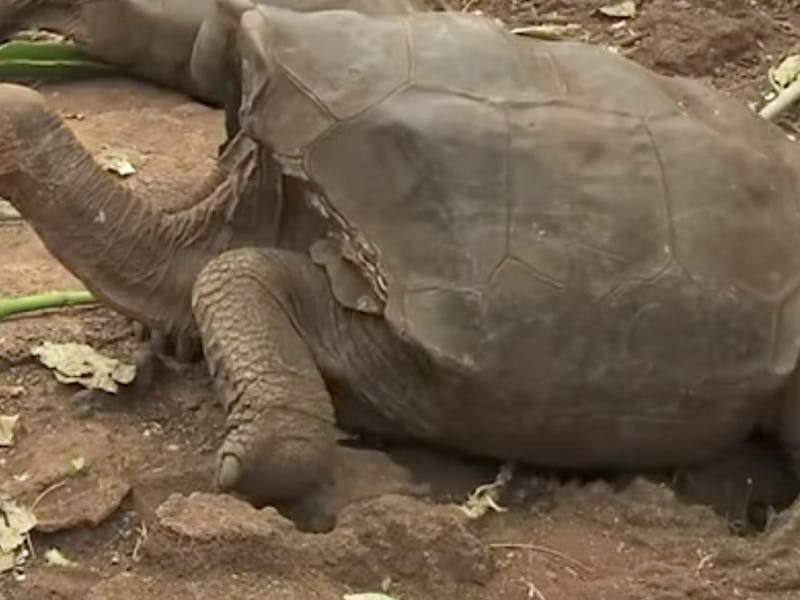Diego the Tortoise Is Saving His Species by Having Lots of Sex
The trick to banging your way out of extinction.

In 1971, the Galapagos tortoise was nearly extinct. If not for the heroic reproductive efforts of one tortoise, the Chelonoidis hoodensis could have died out, but now there are more than 2,000 — and almost half of them have the same dad. Diego, a Galapagos giant tortoise (and giant stud) found in the San Diego Zoo and returned to the island as a part of its efforts to save the species, has fathered an estimated 800 offspring.
Forty-five years ago, the Galapagos tortoise population on Española Island included a mere 12 females and three males. Scientists surveyed captive populations to try to find viable mates, and in the 70s, they found Diego hanging out in sunny San Diego. They relocated him to the Galapagos, and Diego went wild. By 2007, 24 percent of the population was bred on the island rather than in captivity, compared to zero percent in 1994 — indicating a huge success in guaranteeing the future of the species.
Inbreeding, Tho
While the efforts of Diego (handlers think he’s around 100 years old) may be heroic, they could also be very problematic for the future of the species. As with any species, such high levels of inbreeding can lead to a number of hereditary problems. When animals that are more closely related to each other than they are to the general population, the results can be bad: metabolic disorders, structural abnormalities, and inherited disease conditions among them. Writing for Reptile Magazine, Jerry G. Walls observes that inbreeding is particularly common in reptiles and the genetic repercussions are lesser than those in humans if the parent lacks any major defects and breeding is kept to a set number of generations.
“Our study reveals that, at least in the short run, some endangered species can recover dramatically despite a lack of genetic variation and irregular repatriation efforts,” researchers reported in a study published by the journal Evolutionary Applications in 2013. The results of the study have provided a blueprint for the captive breeding of other species in order to decrease the risk of inbreeding in the repatriated population.
The Chelonoidis hoodensis is just one of 15 species of tortoise native to the Galapagos, three of which have already gone extinct.
“I wouldn’t say (the species) is in perfect health, because historical records show there probably used to be more than 5,000 tortoises on the island. But it’s a population that’s in pretty good shape — and growing, which is the most important,” Washington Tapia told AFP.